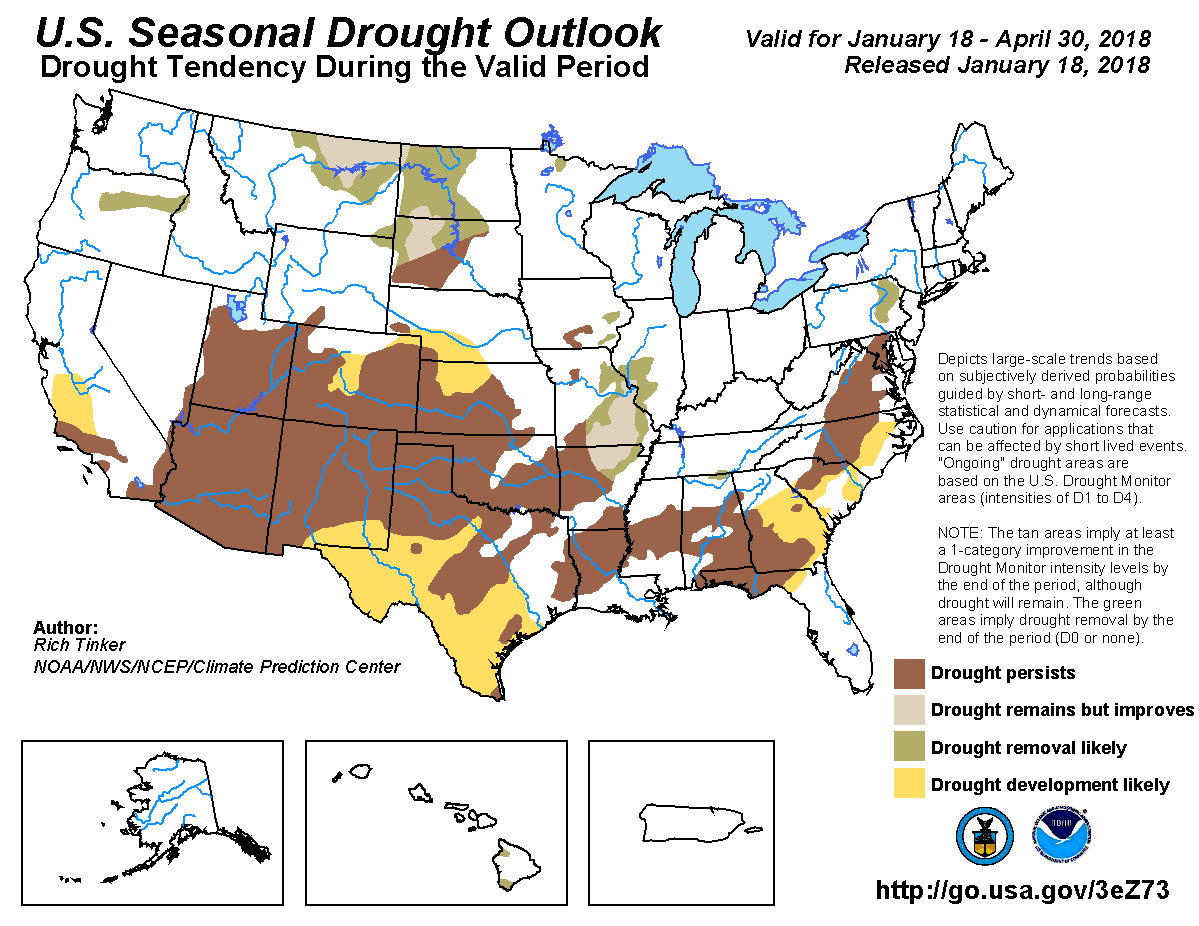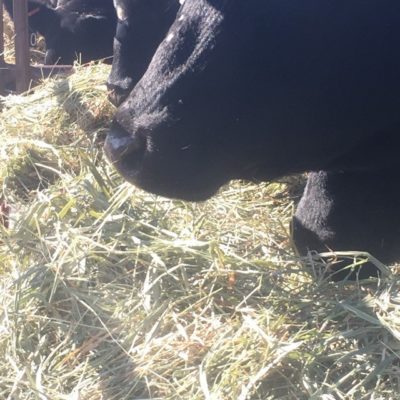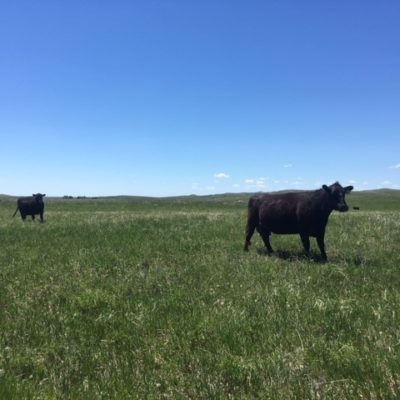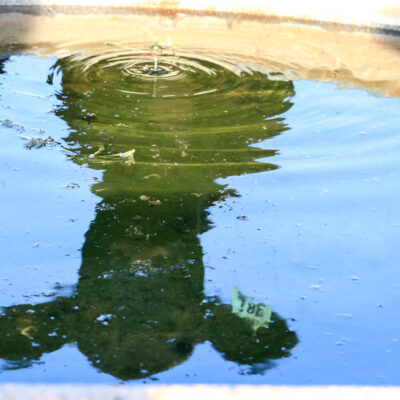The state of Nebraska is in the center of the High Plains Region of the United States. The states that make up this region are Nebraska, Kansas, Colorado, Wyoming, and the Dakotas. I checked the current drought monitor and found that southern Nebraska and southern Wyoming are abnormally dry, and Kansas, Colorado and the Dakotas are experiencing various levels of drought. The current outlook through April is promising for the Dakotas, but dry for the rest of the region. Precipitation from the Canadian border is predicted to remove the drought from North and South Dakota. The Dakotas are projected to experience a normal spring season. As for the rest of the region, southern Nebraska, southern Wyoming, Colorado and Kansas, drought is likely to persist through April 1st. Soil moisture levels on April 1st will have a great impact on the availability of forages throughout the region during the summer months. When planning for drought conditions, which are likely to result in decreased forage production, especially on dry pastures and rangeland, most producers’ strategy is to decrease animal numbers and stockpile forages. Here are four ways to stockpile forages for livestock during drought conditions:
- Buy Hay
Buying hay is the first thing that usually comes to mind when people think of stockpiling forages. During a drought, it is likely that local hay may be of lower quality, therefore it is important to test the protein and energy values (I reccomend a minimum of an NIR scan or the F-3 test at Ward Laboratories, Inc.) before feeding to ensure the forage will meet the animals’ nutritional needs. Hay nutrient values may change during transportation, so if hay is being shipped from another region be sure to test after receiving the lot and before balancing a ration to feed livestock. Having extra stockpiles of hay for drought or emergency feeding is never a bad thing, however buying hay during a drought can be expensive due to less availability, higher demand, and transport costs. Therefore, it would be beneficial to maintain supplies of hay during periods of plentiful forage conditions. In other words, it is most economical to buy hay in excess when it is low in demand and forages are in good supply and save some back as emergency or drought feed. If you are located in Nebraska and are looking to buy hay check out the Nebraska State Hay Hotline.
- Graze Crop Residues
If your operation is located near farmland, consider working with your neighbors to allow your livestock to graze their crop residues. Cattle can graze preferentially to take advantage of high protein, low fiber portions of the plants left standing in the field. If you reside in southern Nebraska or Kansas, corn or wheat residues are good alternative forages especially when fed with energy supplements. When grazing crop residues, be cautious and remember to test for nitrates before letting animals out onto the filed. This option for stockpiling forages is cost effective, however labor intensive and may require cooperation with neighbors. If you live in Nebraska check out the crop residue exchange to find farmers willing to let you take advantage of this great forage source.
- Graze Cover Crops
Adding cover crops to your own cropping rotation can be another great way to stockpile forages. Cover crops allow you to extend the grazing season into the fall. Preferential grazing increases the animals nutritional plane and therefore performance may also increase. If you are lucky enough to get some moisture after grazing, cover crops may produce regrowth and animals may be able to graze those areas again. There are also many benefits to adding cover crops into a cropping rotation for the soil. For more information on that read guest author, Emily Shafto’s Cattle and Crops: Completing the Nutrient Cycle. Planting a diverse cover crop mixture can ensure that if one species in the mix fails others will thrive, diversity can prevent disaster. Cover crops are cost effective as a source of forage, especially in a drought. They are however, more labor intensive and if they are high in nitrates, prussic acid or sulfur, they may detrimentally affect animal health and mortality.
- Rent Additional Grazing Lands
If you are not located in an area where cropping agriculture is prevalent, and you rely on rangelands to provide forage for the summer grazing months. Renting additional grazing lands may not be very cost effective immediately, but in the long run it will take some of the pressure off the lands typically grazed and allow them to rest and rejuvenate to provide forage for the next grazing season. Renting additional grazing lands may be a hit to the pocketbook during that drought season, but it will prevent over-grazing, which is a necessity when practicing good land stewardship.
Stockpiling forages, using one or more of the strategies above, can help prevent a disastrous drought situation. Always monitor the precipitation and temperature conditions so that you can do your best planning for the future. Always look for creative ways to fill gaps in feed availability. A feed or NIR test from WARD Laboratories, INC can aid in decision making when it comes to feeding alternate forages. When buying hay, test nutritional values after shipment and before feeding for accurate results. When grazing corn stalks, oat stubble or wheat stubble check for nitrates before letting animals out in the field. And revisit my blog 6 Cautions When Grazing Cover Crops to ensure you are feeding a safe forage when grazing cover crops. For more information on drought planning visit the National Drought Mitigation Center.





